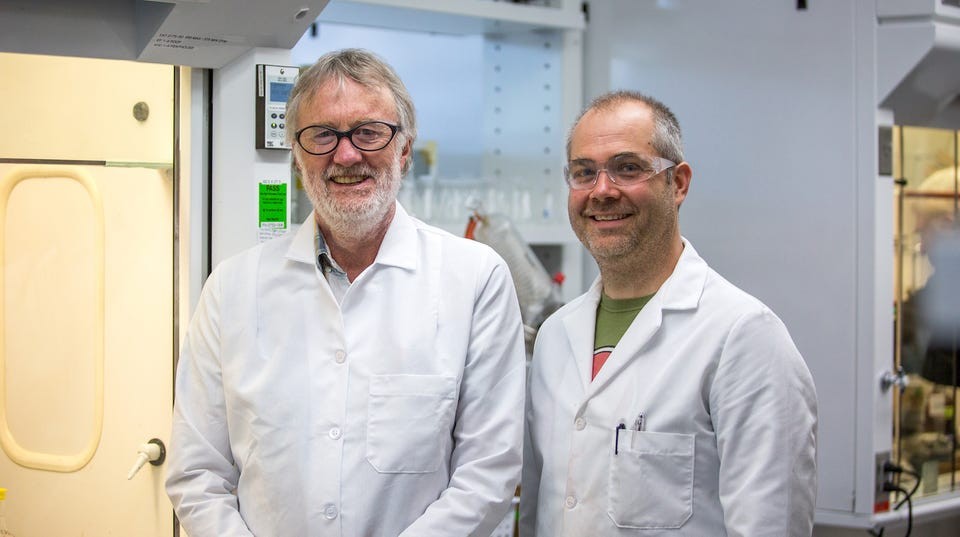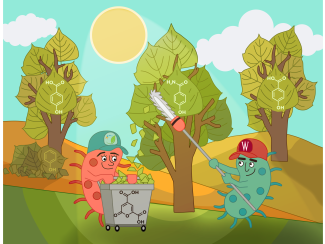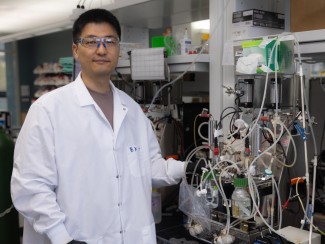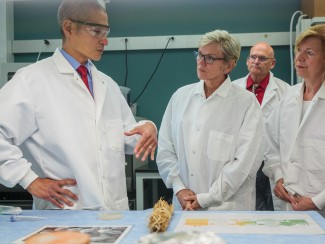
Wisconsin researchers have found a way to make acetaminophen — the active ingredient in Tylenol — from plants.
Traditionally, the popular pain reliever has been made using a fossil fuel. And there's no way to switch to the plant material cost-effectively.
However, with the finite nature of fossil fuels and their widespread implications on climate change in mind, scientists are increasingly preparing for an economy in which petroleum takes a back seat to natural resources we already have in abundance.
"At some point, it may be the case that we are completely prevented from using fossil fuels," said John Ralph, a professor of biochemistry at the University of Wisconsin-Madison whose lab conducted the research.
"We are not close to that now ... but it is almost inevitable. Preparing for a future in which our resources are derived sustainably seems prudent."
The acetaminophen work was done at the Great Lakes Bioenergy Research Center, based at UW. Created in 2007 by the U.S. Department of Energy, the center partners with universities across North America to develop long-term, renewable uses for biomass.
Biomass is any living thing — think plants, trees and agricultural remnants — that can be used for fuel. A billion tons of biomass may be available in the United States every year, according to the DOE's "2016 Billion-ton Report."
Traditionally, the starting materials used to make acetaminophen come from coal tar, a dark, viscous liquid that results when coal is subjected to high heat in the absence of oxygen.
The research team went in another direction.
About a quarter of biomass is lignin, a polymer composed at the atomic level of carbon, hydrogen and oxygen. It's the stuff in the cell walls of most plants that makes them rigid. But it's a quirky substance that has given academic and industrial researchers headaches for more than a century, according to Ralph and former post-doctoral fellow Justin Mobley, who also worked on the research.
On a molecular level, no two lignin molecules are exactly the same. This irregularity makes it difficult to break lignin down into useful materials in a systematic fashion, which makes it notoriously difficult for researchers to work with.
Although using the lignin efficiently to make useful products is a goal of the Center, the key here was the small molecules attached to the lignin — called clipoffs.
Ralph, Mobley and a research scientist at the center — Steven Karlen — were having a conversation when Mobley had a eureka moment that sparked their research.
"(Ralph) started talking about clipoffs, and I said why don’t we make something out of these," Mobley said. "So we chose acetaminophen as a catchy target that people have heard and care about."
In just three steps, the researchers were able to make acetaminophen from the clipoffs, employing the same chemistry used to develop it from coal tar. All that changed was the source material.
Karlen noted that the clipoffs used by the researchers would otherwise be wasted, so using them to make a valuable product is a bonus.
"We want to use things that are being thrown away right now ... that we don't have to put extra effort into," said Mobley, who is now at the University of Kentucky. "Lignin is a waste product that people really aren’t using, and we want people to use it to have a more sustainable future."
Mobley hopes the finding will stimulate other researchers to develop alternative processes to make things we use every day.
In some cases, this is already being done. Thomas Epps, a professor at the University of Delaware, has used biomass to make a pressure-sensitive adhesive comparable to Scotch tape. LignoTech USA Inc. founded in 1930 in Rothschild, Wisconsin, also specializes in lignin-based applications.
More than 80,000 metrics tons of acetaminophen are consumed worldwide on an annual basis. Ralph acknowledged that this new process can't compare with current acetaminophen manufacturing methods because the fossil fuel-based materials are so cheap.
"But it's a sustainable, green way of making it," he said. "And at some point, we have to get away from relying on these fossil fuels."





